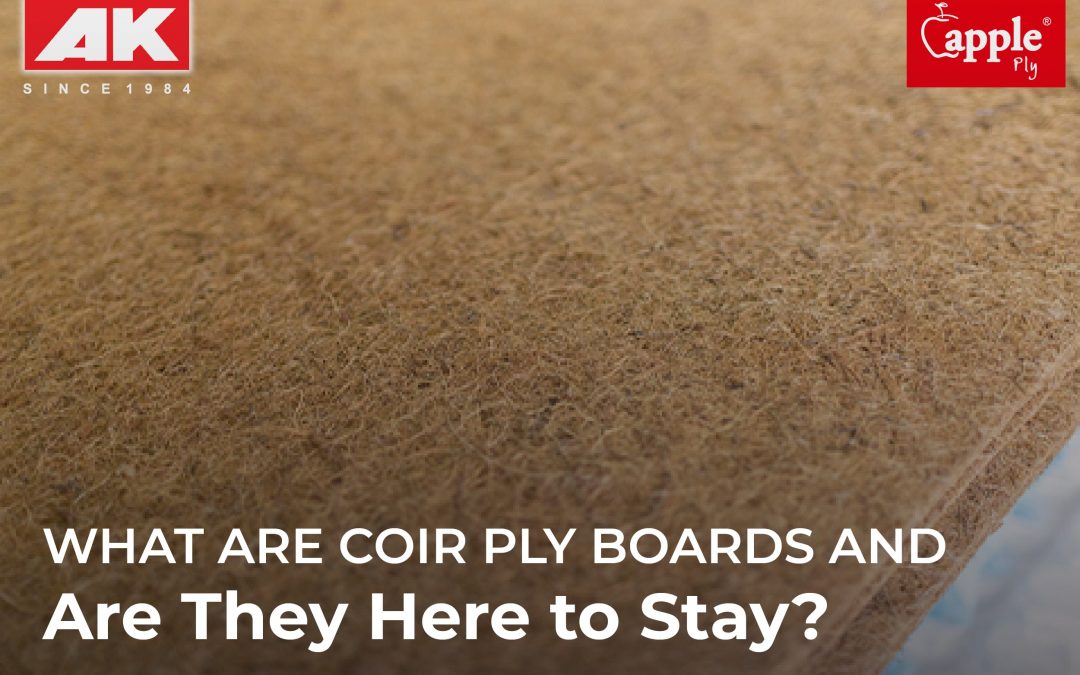Times are changing for better and for worse. Climate change’s consequences are no longer a concern for the future, but for the now. The impacts are beginning to show, and more people are growing concerned.
[responsivevoice_button]
As a result, businesses, government agencies, and even ordinary citizens are actively campaigning for innovative uses of alternative resources in order to promote sustainability and ensure a safer, cleaner future. The use of coir, also known as golden fibre, is one of the many alternatives that is currently being promoted.
The coir industry and coir wood manufacturers should be commended for producing and introducing this sustainable alternative to wood to the general population.
Before we get into the benefits of using coir plyboards, let’s understand what coir is and the coir ply manufacturing process
What is coir?
Coconut husk fibres are used to make coir. Coir is the best replacement for durable textiles since it is the thickest and hardest natural commercial fibre. Coir fibre as a by-product of the coconut industry also has enormous potential for use in the production of structural composites as a substitute for wood.
All you need to know about the coir ply manufacturing process:
To put it in simple words, coconuts are collected and separated into their parts (the kernel and the husk), leaving the coconut coir, which was initially regarded as waste. This coir is then mixed with a polymeric matrix, such as phenol, polyester, or epoxy, and heated and pressured to a specific temperature to produce wood.
Coir ply boards are made by bonding alternate layers of coir boards and rubber veneers using phenol resin. It’s a more environment friendly, long-lasting, and practical alternative to plywoods made using natural wood.
Benefits of using coir plyboards
Below mentioned are some of the many reasons coir plywood works as an excellent substitute to natural plywood.
- Coir ply provides all of the benefits of phenol-bonded ply, plus the added strength of fibre reinforced phenol bonding.
- Coir is abrasive in nature and resists contraction and expansion to temperature changes.
- Unlike particle boards, coir ply does not flake.
- Coir plywood can be manufactured to give a natural, smooth, and glossy appearance. They can be finished, polished, painted and laminated.
- Coir ply boards have both vertical and horizontal load-bearing strengths.
- Coir plywood is insect-resistant, fire-retardant and boiling water-resistant.
Applications of Coir Plywood
*note: since the water absorption value of coir plywood is high, they are only suitable for indoor furniture.
- Bedroom, living room and office furniture
- Kitchen cabinets
- Door panels
- Wall panels and roofings in earthquake-prone regions
In conclusion, to answer your question, yes coir ply boards are here to stay. As the implications of the global climate issue become more apparent, eco-friendly market trends are gaining traction. Hence, it’s important that manufacturers, interior designers and architects have a viable alternative to offer to customers when they look for sustainable alternatives for projects.
It’s time to start using coir fibre in furnishings and building products and also encourage more people to use them. If you have made up your mind and have decided to pitch the golden fibre to your client, AK plywood is here to help you out! We are India’s leading manufacturers of allied wood and we provide the highest quality coir plywoods! Reach out to us if you have any questions or would like more information about our products.




